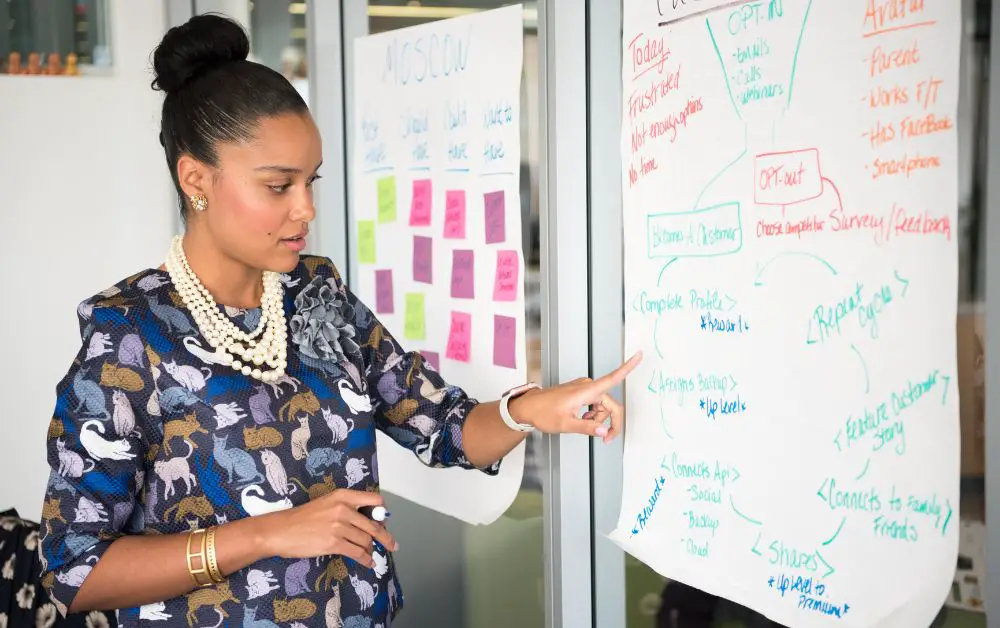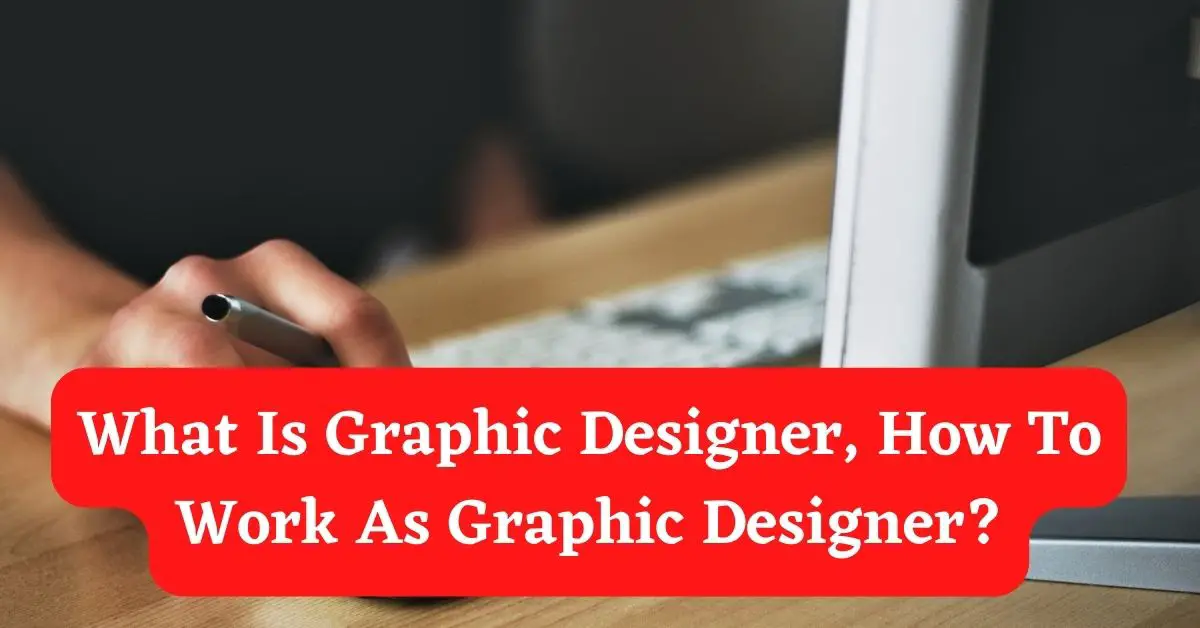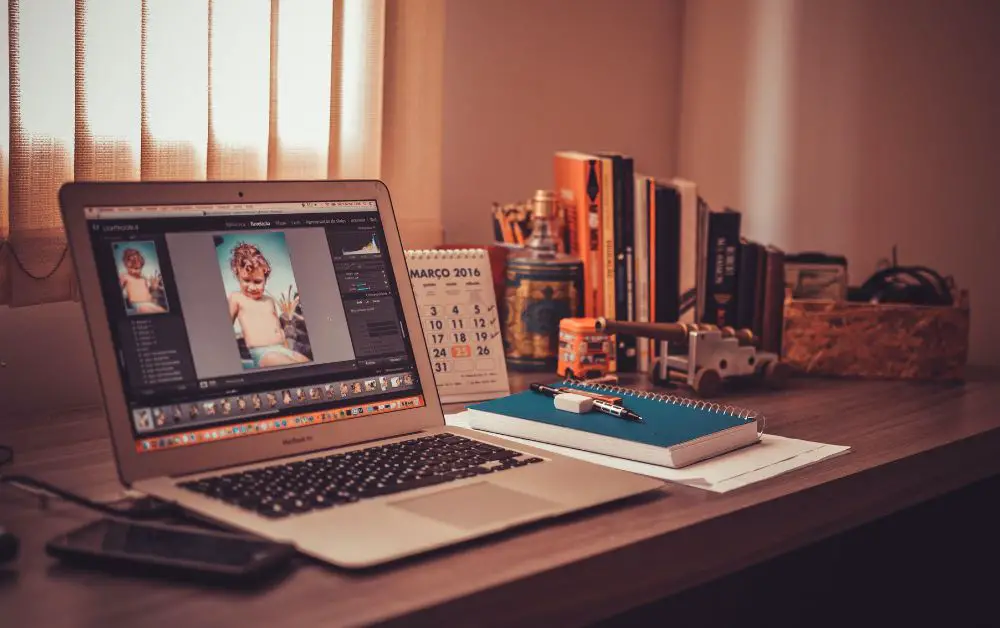|
Getting your Trinity Audio player ready... |
A Graphic Designer crafts meaningful visuals for businesses, clients, and various industries, including logos, advertisements, website layouts, and more. These creations stand as pillars of communication and design. To generate their designs, graphic designers apply a spectrum of skills, such as typography (arranging text in a visually pleasing manner), illustration (producing visual content), photography, web design, copywriting, and animation, among other techniques. The fusion of these diverse skills empowers graphic designers to offer unique and impactful designs that connect with their audience. In the following sections, we will delve deeper into these skillsets.
Graphic designers are creatively active across a variety of fields. From shaping visually impactful content in advertising agencies to constructing engaging game environments in the realm of video games. In print media like newspapers and magazines, they create compelling graphics for articles and dictate the finished layout. Beyond mainstream roles, they also enrich the film and music industries, through creation of promotional materials and cover art respectively. Digital platforms aren’t left untouched with graphic designers enhancing the visual appeal of websites, blogs, and social media sites. For a deeper insight into the rich and varied roles of graphic designers, consider exploring their contributions in film, music, or video games.
Graphic Designer Should Learn:
1. Typography as a Graphic Designer
With thousands of unique typefaces available today, choices range from an array of shapes and sizes to a variety of weights, colors, textures, and styles. Each typeface consists of individual elements known as characters or glyphs.
A glyph, for those unfamiliar, represents a single letter or combination of words. When we refer to ‘types’, we are discussing these combinations of glyphs that make up these different typefaces. Knowing how to use these differing typefaces, each with their signature impact on design, plays a critical role in the field of graphic design.
Special features in typefaces go beyond the basic components, playing a significant role in enhancing the visibility and readability of certain letters or groups. For instance, certain letters like ‘g’ or ‘a’ can be visibly distinguished when these unique features are used. In the context of graphic design, the practical application of these features is essential as they help in enhancing the overall design aesthetics without deviating from clarity and brevity. It’s not the technicality or history of these features that matters, but how they could be significantly leveraged in typography.
Typography refers to the creative process of using characters, which include letters, numbers, symbols, and words, to convey ideas or express thoughts.
It is an art and craft where typographers purposefully select and arrange typefaces, commonly known as fonts, to make the message clear and memorable. The choice and use of typefaces are paramount; selecting the correct typeface can significantly shape the perception and tone of the text, thereby influencing its overall portrayal.
A designer could choose a bold font to assert power, while a round font might suggest comfort and familiarity. Being proficient at this practice requires adaptability as there is an abundance of typefaces accessible for use. Effective typography, besides bolstering readability and comprehension, also adds aesthetic allure to a design, enhancing its overall visual impressiveness. Key to typography is legibility – each character helps communicate a message, and an illegible or poorly chosen typeface can mar an otherwise well-crafted design.
Consequently, typographers play a critical role not only in choosing, but also in tailoring typefaces to foster effective communication that befits specific design needs.
2. Illustration As a Graphic Designer

An illustration is a visual representation of information. A great way to think about illustration is as being similar to writing; however, instead of using words to communicate, It uses pictures. This uses pen and ink, pencil, watercolor, acrylics, digital tools, etc., to create images.
An illustrator’s job is to visualize complex concepts and translate them into visually-appealing compositions.
An illustrator should know how to draw well, as drawing is often an integral part of the creative process.
3. Photography

Photographers take photographs. Images are captured by light reflected off objects and recorded electronically. Professional photographers need to have good eyesight, steady hands, and keen attention to detail.
Good lighting is a key aspect of any picture. Photographers use lenses to focus light onto their subject matter.
Lenses come in different shapes, sizes, and types, each having varying effects and purposes. Lenses can range from simple wide-angle lenses to complicated telephoto lenses, macro lenses, fisheye lenses, zoom lenses, ultra-wide-angle lenses, etc.
4. Layout & Copywriting

The layout is the arrangement of a particular page of content. Copywriting focuses mainly on language and tone, while layout focuses on aesthetics.
Both tasks require careful consideration of font size, line spacing, margins, paragraphs, headings, bullets, etc.
Layout and copywriting are two sides of the same coin — they both contribute to the final product and can’t function without the other.
5. Animation / Video Editing
Animation and video editing are not traditionally associated with graphic design and could easily fall under other categories.
However, graphic designers are expected to work closely with animators and videographers, just as they would with anyone else working on their projects.
Animators and videographers are responsible for making sure their animations and videos look aesthetically pleasing.
They also ensure that any soundtracks match perfectly with the visuals.
When designing animated films or video games, designers are able to play around extensively and explore various techniques and technologies to find ways that the project can benefit.
What do Graphic Designers do?
Graphic Designers create visual concepts to communicate ideas, stories, products, services, and brands.
A graphic designer works with clients to develop creative solutions to design projects. Graphic designers work with marketing teams and brand managers to develop strategy and direction.
They use their creativity to find unique ways to convey information visually. They may collaborate with developers and programmers to bring projects to fruition.
1. What do they need?
To be successful at what they do, graphic designers need strong communication skills. They have to be able to listen to different types of people and understand their points of view. They should also be able to get along well with others.
To succeed professionally in this position, they need to know how to work independently and efficiently, while being organized and detail-oriented.
2. What do they do?
They take client input and feedback and turn them into designs through a variety of methods including typography, illustration, photography, motion graphics, video editing, and web design. In addition, they may provide research and analysis for these projects.
3. Where do they work as a graphic designer?
Most graphic designers work out of offices and studios. However, some freelance graphic designers may work remotely or even work from home. Freelance graphic designers often work directly for companies, although many also work for advertising agencies, public relations firms, non-profits, government agencies, and trade associations.
4. How much do they make?
The median annual salary for graphic designers was $55,800 in May 2012, according to the U.S. Bureau of Labor Statistics. Graphic designers who worked full-time earned an average of $66,000 per year.
5. What is the job outlook?
According to the BLS, the employment of graphic designers is expected to increase by 14% between 2010 and 2020. Opportunities are expected to be particularly strong in the fields of publishing, printing, and commercial art.
What is Canva and How to take benefit ?
What is the difference between a trademark and a copyright?
Arsalan Malik is a passionate Software Engineer and the Founder of Makemychance.com. A proud CDAC-qualified developer, Arsalan specializes in full-stack web development, with expertise in technologies like Node.js, PHP, WordPress, React, and modern CSS frameworks.
He actively shares his knowledge and insights with the developer community on platforms like Dev.to and engages with professionals worldwide through LinkedIn.
Arsalan believes in building real-world projects that not only solve problems but also educate and empower users. His mission is to make technology simple, accessible, and impactful for everyone.





